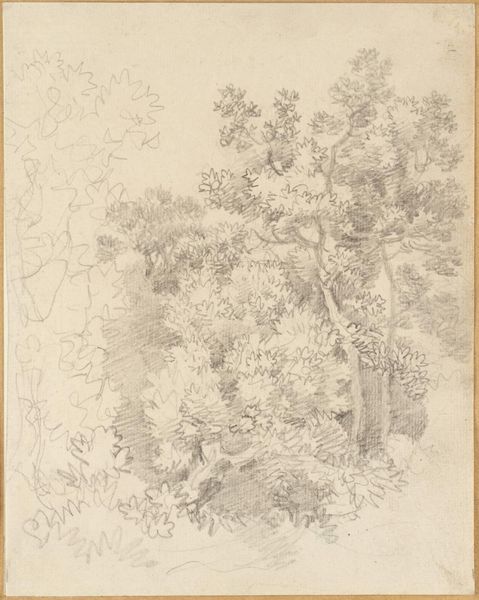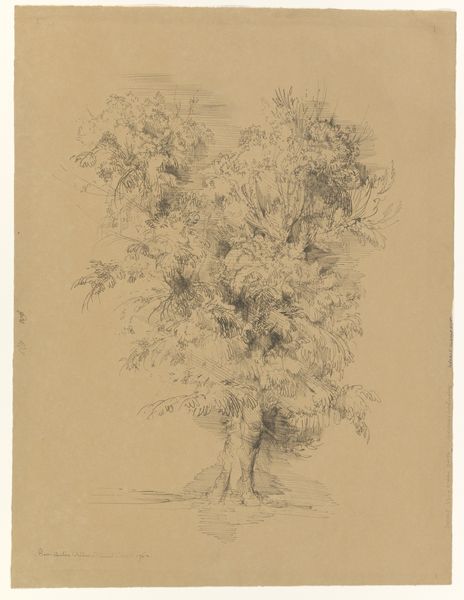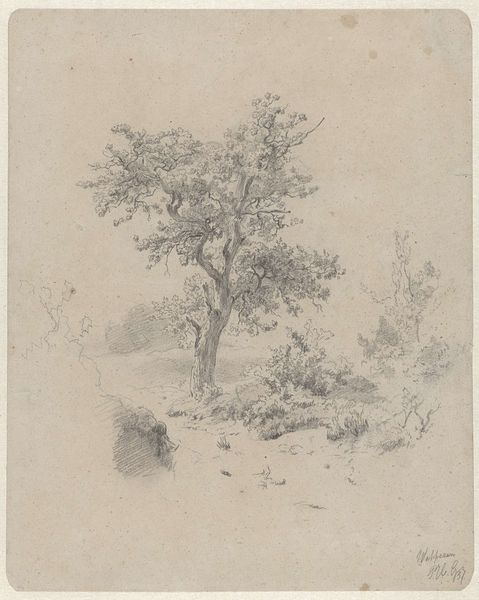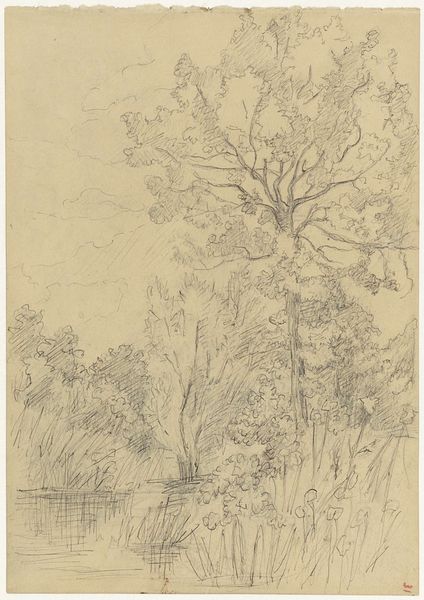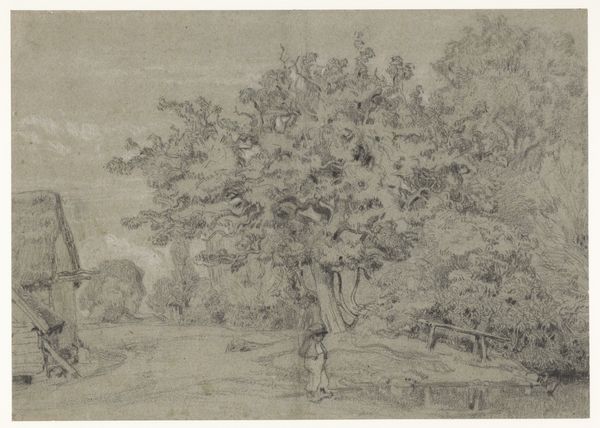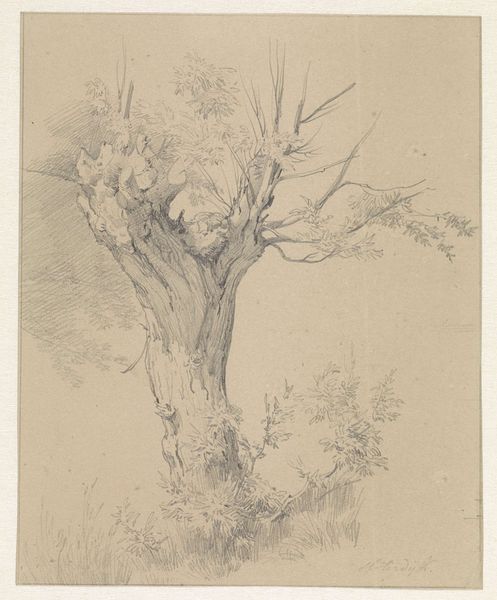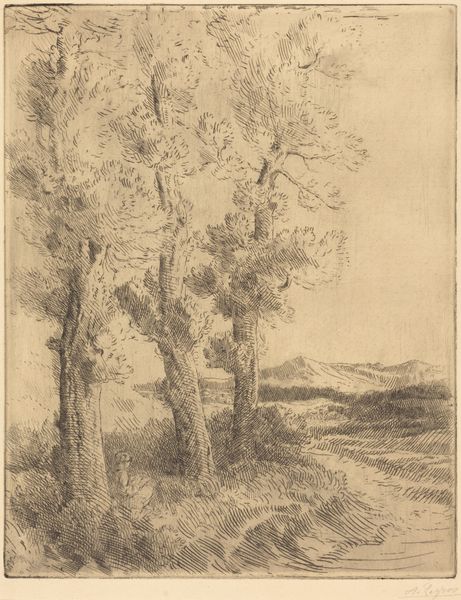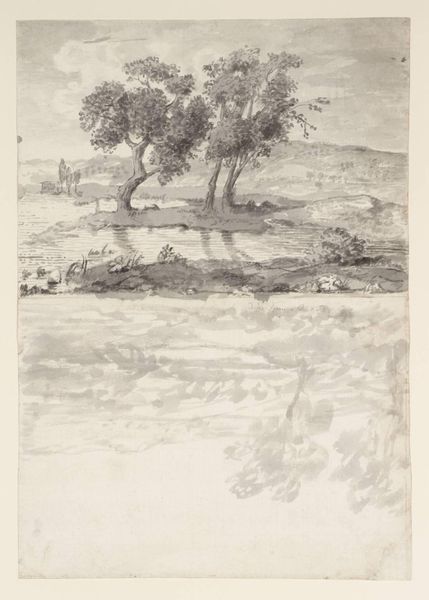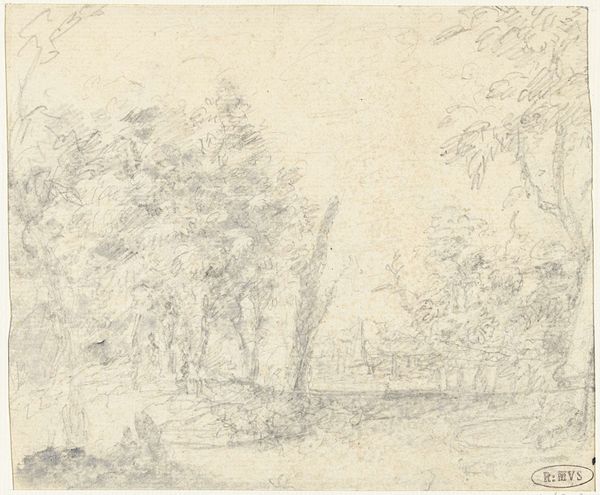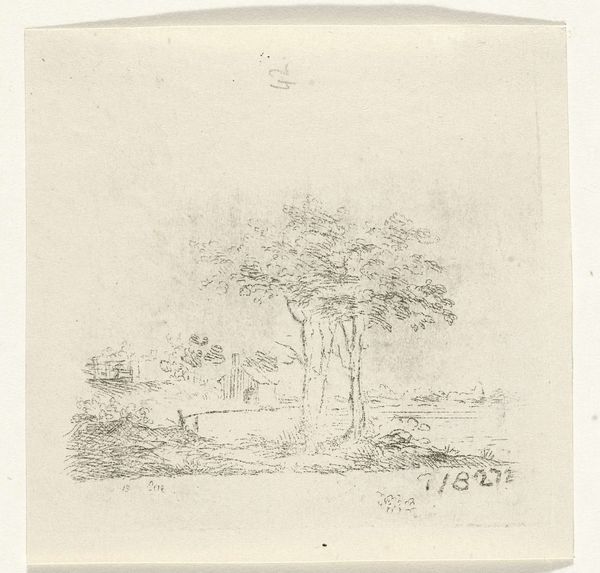
drawing, pencil
#
drawing
#
pencil sketch
#
landscape
#
romanticism
#
pencil
#
realism
Dimensions: height 310 mm, width 230 mm
Copyright: Rijks Museum: Open Domain
Editor: Here we have "Knotwilg in een landschap," a pencil drawing created sometime between 1841 and 1857 by Johan Daniël Koelman. It feels so delicate, like a captured moment. What do you see in this piece, especially given the artistic context of its time? Curator: Well, let's consider the labor involved. Koelman painstakingly rendered this landscape using a relatively simple, mass-produced tool – the pencil. This act elevates the everyday to the level of fine art, challenging traditional hierarchies. Think about the paper, too – where was it made? What were the social conditions of its production? These are vital questions. Editor: That’s an interesting point. I hadn’t considered the production of the materials themselves. I was so focused on the tree itself! Curator: Exactly! The knot willow, a common tree, rendered with such detail using industrial materials. Consider its function. Was this sketch made as a preliminary study for a larger, perhaps painted, work? The pencil itself, think of its material composition, its graphite, the wood – each carries its own story of extraction, manufacturing and labor. The artistic creation and wider economics of resources are interwoven. Editor: So, you are saying that by looking closely at the materials, we can understand something about the society and economy in which Koelman was working? Curator: Precisely. The "Knotwilg in een landschap" presents us not just with a bucolic scene but also hints at the underlying material conditions and power dynamics of its creation and consumption. What do you make of that? Editor: That’s really changed how I see it. It’s no longer just a tree, but a record of a specific time and place, made with materials that have their own story to tell.
Comments
No comments
Be the first to comment and join the conversation on the ultimate creative platform.


